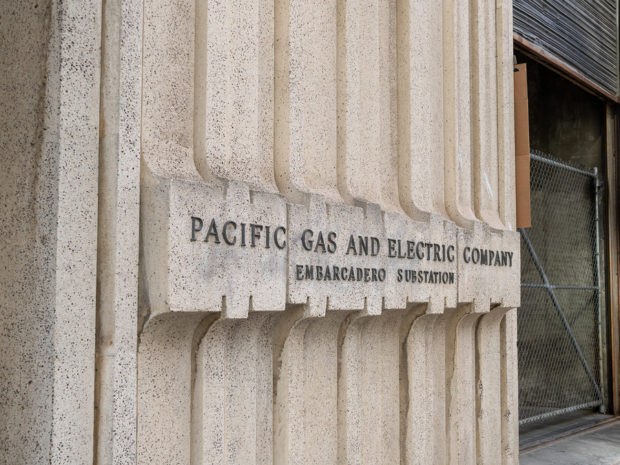Seth Klarman’s Baupost Group has been the poster child of the hedge fund industry’s ill-timed stock-market bets on the troubled utility PG&E Corp., which announced plans for bankruptcy.
It turns out, though, that Baupost’s stock purchases, valued at $873 million at the end of September, are just part of a bigger and more complex wager on California’s largest utility. Baupost also bought $1 billion of legal claims in November that an insurer held against the utility, giving the hedge fund the right to recover losses incurred from the deadly wildfires in 2017, according to people familiar with the matter.
Baupost is a major player in the esoteric market for subrogation claims, where insurers sell the right to sue to recoup damages suffered by policyholders. Insurers offer the claims at a discount to investors in return for the certainty of being paid upfront. For Baupost, the claims are in keeping with Klarman’s penchant for knotty litigation and bankruptcy workouts, from Puerto Rican debt to U.S. nuclear power plants.
A Baupost representative declined to comment.
PG&E said it will file for bankruptcy later this month after the cost of wildfires left it with potential liabilities of $30 billion or more. Since the end of September, when Baupost last reported its equity holding, PG&E’s shares have plunged about 82 percent. While equity is usually wiped out in a bankruptcy proceeding, there have been exceptions, including the reorganization of mall owner General Growth Properties amid the recession.
The insurance claims would be eligible for repayment under a bankruptcy proceeding, potentially serving as a hedge that could offset losses on PG&E’s stock. In addition, the claims could also give Baupost a voice in the terms of the utility’s reorganization.
“A bankruptcy provides the means to review and resolve a large number of claims in a much more organized and consistent manner,” said David Pauker, a restructuring expert who has been working on the bankruptcy of Lehman Brothers Holdings.
Debt Price
Baupost paid as much as 35 cents on the dollar to purchase the $1 billion in claims, which are tied to the 2017 wildfires, from CSAA Insurance Group, the people said. The bankruptcy filing could drive down prices even further, prodding insurers to sell claims at a set price instead of risking their luck through a likely years-long reorganization process.
Litigation experts say that the PG&E bankruptcy will be particularly tricky, given the company’s massive liabilities and lack of sufficient insurance to cover such claims. In addition, claim holders will most likely be treated as general unsecured creditors, who are almost last to get paid in a bankruptcy proceeding.
“The greatest risk is on the collectability front,” said Allison Chock, chief investment officer for Bentham IMF, a litigation funding firm. As a general unsecured creditor, she added, “your debt may just be wiped out.”
While Baupost is the largest known buyer of the PG&E claims, other investors who specialize in distressed and special situation investing have also been bidding for them, according to people familiar with the sales process.
Baupost, which is based in Boston, has bought subrogation claims from insurers in the past and is currently building a very large position in another pool, according to a person familiar with the situation. In some deals, Baupost buys only a portion of the claims and jointly pursues litigation with the insurer.
Loath to Sell
Subrogation claims are routine within the insurance industry. When a customer is involved in an auto accident, for example, the insurer pays its policyholder, whose right to sue for the damages then reverts to the insurance company. It then can seek to collect the damages by proving that the other driver in the accident is at fault.
Insurers are ordinarily loath to sell such claims, in part because they must take a discount on their face value.
“It would be fair to say that it’s uncommon on a scale of the type we are presently seeing explored,” said Michael Halsband, a partner at Drinker Biddle & Reath who advises clients on reinsurance transactions and the issuance of catastrophe bonds. “But there has been a great deal of interest around it ever since the recent events with the wildfires.”
The large number of wildfire claims against PG&E has created a unique situation in which a single company is facing damages caused by a natural disaster. PG&E’s plight is magnified because in California utilities can be held liable for property damage from a fire caused by their equipment. State investigators have already found the utility responsible for sparking 17 of the 2017 wine country fires, alleging violations in 11 of those.
“When you have a hurricane, you can’t go suing God for the losses,” Halsband said.





















 NOAA Announces Latest AI-Driven Global Weather Models
NOAA Announces Latest AI-Driven Global Weather Models  What to Expect in 2026: U.S. P/C Results More Like 2024
What to Expect in 2026: U.S. P/C Results More Like 2024  Good Times for U.S. P/C Insurers May Not Last; Auto Challenges Ahead
Good Times for U.S. P/C Insurers May Not Last; Auto Challenges Ahead  Underwriter, Actuary Fears of AI Drop; Work Needed on Collaboration
Underwriter, Actuary Fears of AI Drop; Work Needed on Collaboration 




